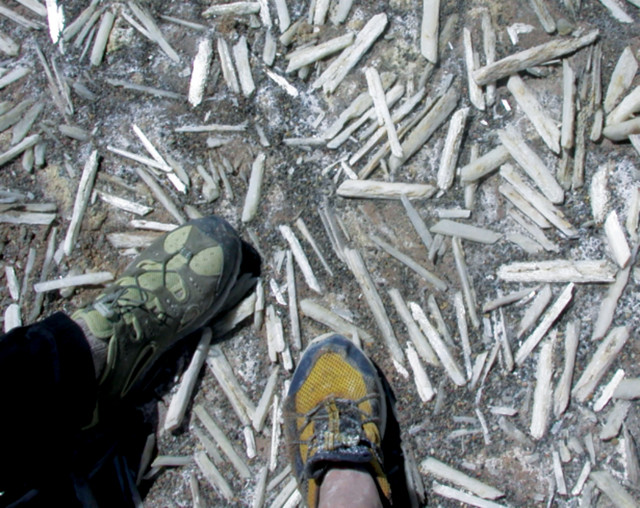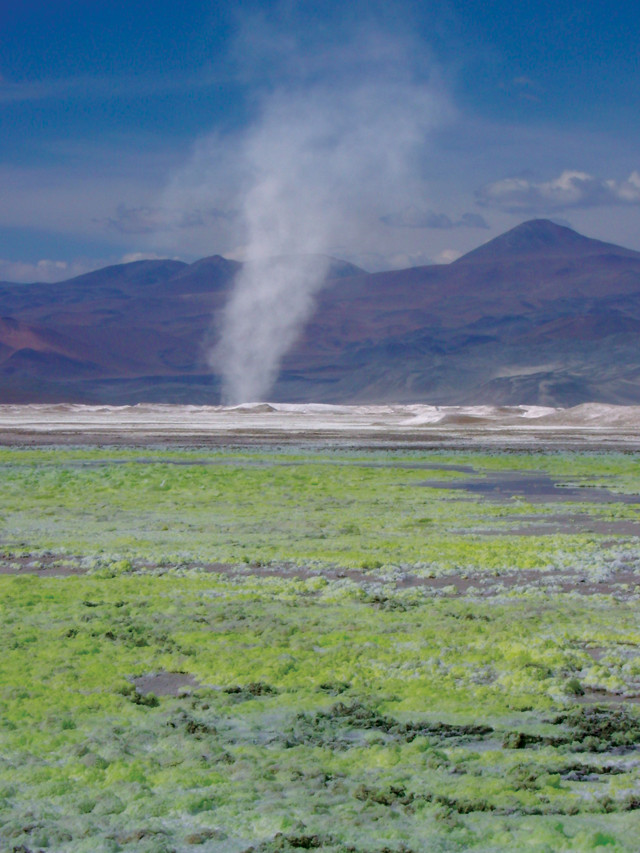
by Lucas Joel Thursday, June 15, 2017

Abraded gypsum blades deposited by a gravel devil. Credit: Kathleen Benison.

A gypsum gravel devil swirls above the Salar Gorbea. Credit: Kathleen Benison.
Sand grains, by definition, are between 0.06 and 2 millimeters in diameter, and they are often thought of by scientists as the largest sediments that wind can transport, with larger sediments simply being too hefty for winds to keep aloft. But strong winds, particularly in tropical storms and tornadoes, are known to move objects far larger than sand over short distances. Now, in the high Andes of Chile on the Salar Gorbea salt flat, evidence has been found of tornadic “gravel devils” whipping across the landscape and transporting gypsum crystals as long as 27 centimeters.
Geologist Kathleen Benison of West Virginia University spied the gravel devils — akin to swirling vortices of fine sediment known as dust devils — while she was in Chile studying acid brine lakes. “As soon as we got to Salar Gorbea, I saw some of the large gypsum crystals scattered across the surface,” Benison recounts. “I wondered how they got there. I knew they must have grown in lake waters, but they were broken, as if they’d been thrown around.”
Benison soon spotted what looked like a white dust devil spiraling in the distance, about 2 kilometers away. And as she traveled into the salt flat, she found cemented dunes made of what she calls “gypsum crystal breccia,” which likely formed from deposition by the gravel devils, she reported in Geology.
The blade-shaped gypsum crystals showed signs of abrasion that could have only happened when “grains are struck against each other … by wind,” Benison says. Most of the blade-shaped crystals she measured were about 10 centimeters long, with some more than double that, and there was evidence they’d been transported up to 5 kilometers from their sources. The find “marks the first occurrence of gravel-sized grains moved efficiently in air by suspension,” she wrote in the study. Additionally, she says, geologists “now have a new option for depositional interpretation” for some brecciated rocks.
© 2008-2021. All rights reserved. Any copying, redistribution or retransmission of any of the contents of this service without the expressed written permission of the American Geosciences Institute is expressly prohibited. Click here for all copyright requests.